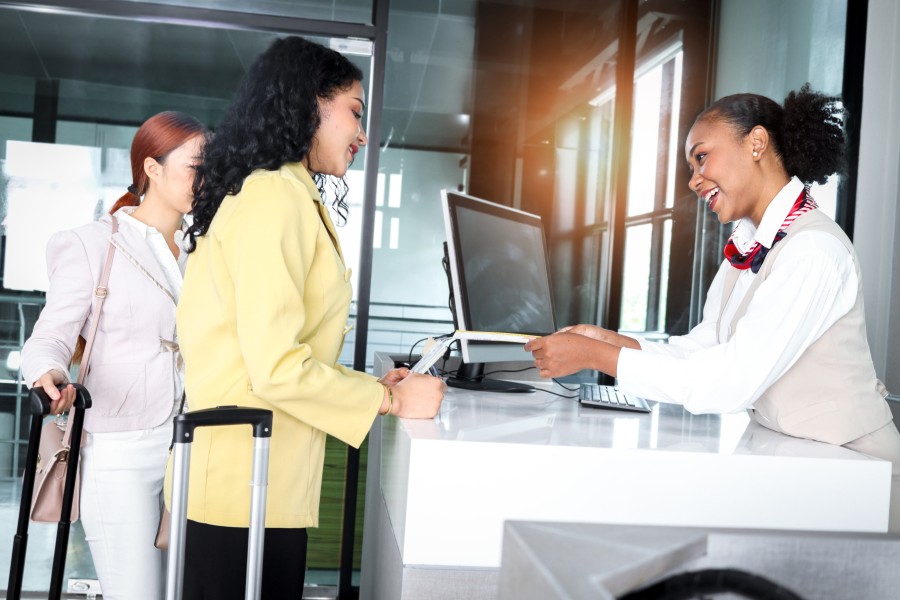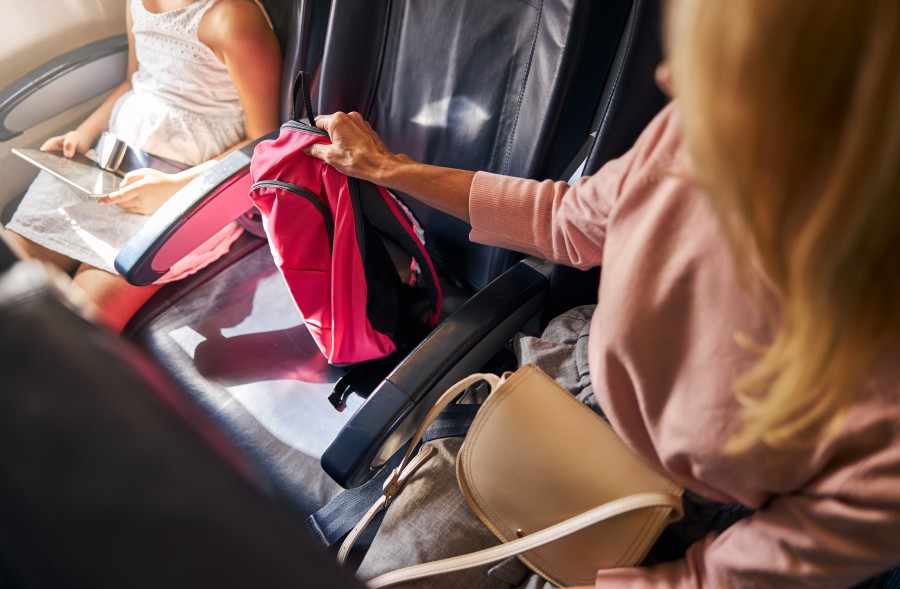Flying with your insulin pump

Flying with your insulin pump
Flying can be a thrilling experience, but when you rely on an insulin pump to manage your type 1 diabetes, it can also raise some concerns. How do you navigate airport security with your medical device? Can you take insulin on a plane? What special preparations are needed to ensure your journey is safe and smooth?
The good news is that flying with an insulin pump is entirely manageable with the right planning. Let’s take a look.
Prepare for flying with an insulin pump
Before flying, it’s a good idea to contact the airport in advance, if possible.1 Most insulin pumps and CGMs shouldn’t be screened by the x-ray or security scanners on the luggage belt, and should be manually checked.1 You can take this opportunity to ask if there are alternatives to usual scanners for checking your carry-on and insulin pump.1
Some airlines may even allow you to carry extra luggage due to your medical condition – it’s worth enquiring, just in case!1
Plan to arrive at the airport earlier than recommended, allowing an hour for security proceedings only.1 This will provide extra time in case of any misunderstandings or discussions you may need to have with the security staff.2
At the airport
When you reach the airport, tell the security staff in advance that you have diabetes equipment with you.2
If there are any issues, the letter provided by Air Liquide Healthcare should help. You can take this letter with you to the airport to show to an airport security representative, should they request additional details.
It’s also important to bring a letter from your doctor explaining your condition, your medical ID and a medical device card (if your country issues one).1 You can also bring a prescription (written in English) and a certificate that confirms all the medical supplies you need to carry at all times.1,2
You should be able to wear your insulin pump and not be asked to remove it.1 You can also request an alternative way of being checked at security, such as a pat-down (manual inspection).1
If there are any issues, ask to speak to the manager, as they may be better informed about the rules for travelling with an insulin pump.2
Learn more about travelling with diabetes and get useful tips for making the most of your holiday in our dedicated article.
During your flight

During your flight
You’ll need to take your diabetes supplies with you on the plane as carry-on luggage.1 This is so you can have easy access to it throughout the flight, in case of emergencies, and to avoid the X-ray scanners that are used for hold luggage.1,2
It’s also a good idea to have any diabetes equipment on you during the flight rather than store it in the overhead compartment. This way it will be protected in case of turbulence and you can have immediate access to it.2
Can you take insulin on a plane?
Yes, you may take insulin with you on the plane, because you’re entitled to have your medication with you at all times in case of emergencies.1 Also, insulin might freeze in the hold compartment, as temperatures there tend to drop very low.2 So, you’ll have to take your insulin as part of your carry-on luggage.1,2
However, there are certain rules and tips you should follow when you take your insulin with you to ensure it travels safely.2
Flying with insulin
First, you’ll have to carry your insulin in a medically approved cool bag – otherwise, airport security staff may not accept it.1 Have your medical letter ready in case there are any issues.1
All of your insulin or other diabetes medications need to have a clear label that states your name and the name of the insulin manufacturer.2
Unlike your pump, insulin vials can safely pass through the x-ray luggage scanner, together with your carry-on luggage.1
Additional tips for flying with insulin
Consider having all your insulin supplies in a separate, transparent and clearly labelled bag, so you can pop them through security faster.1
You might want to consider packing at least double the amount of medication you normally need and an extra battery for your pumps.1 It can be a good idea to put half of the supplies into your travel companion’s luggage just in case your suitcase gets lost.1
Once you’re on the plane, ensure you have your insulin with you rather than in the overhead compartment.2 This is to give you immediate access to your insulin, should you need it, but also to keep it safe during bumpy flights.2
When you land, it’s a good idea to check that your insulin also arrived safely with you.2 If it looks unusual in any way, replace it.2
Flying with your insulin pump is allowed, but there are some guidelines you need to follow. Make sure your insulin pump doesn’t go through an X-ray scanner, allow plenty of time for security checks and keep your diabetes kit close. With thoughtful planning and the above tips, flying with an insulin pump should be easy, so you can enjoy your trip!
Sources
- JDRF. Airport security and diabetes technology. Accessed 22 August 2024. Available at: https://jdrf.org.uk/knowledge-support/living-with-type-1-diabetes/everyday-life/travelling/airport-security-and-diabetes-technology/
- International Diabetes Federation (IDF), Travelling with diabetes. Written on 21 December 2020. Accessed 22 August 2024. Available at: https://idf.org/europe/media/uploads/sites/2/2023/06/AwarenessPaper-DiabetesAndTravelling-21Dec2020_compressed.pdf


